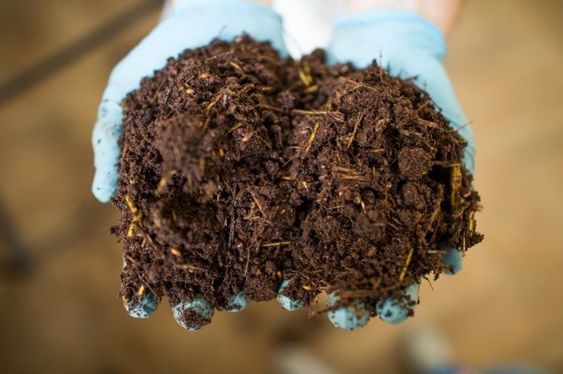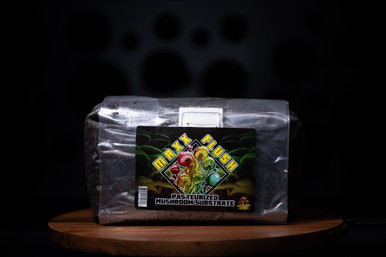Master the Art of Mushroom Growing: Top Substrate Recipes for Home Cultivation
Posted by Jmaequiogue on Jul 11th 2024
Growing mushrooms is a fascinating activity which offers an abundance of edible fungi as well as a fulfilling experience. The substrate, or the medium that gives mushrooms the nutrients they need to thrive, is one of the most important components of a successful mushroom growing operation. This guide will delve into the essential components, preparation methods, and various recipes for mushroom substrates to help you cultivate your own mushrooms at home. For those in Portland, Maxx Flush™ by Mycelium Outlet is a premier choice for high-quality mushroom substrates.
Understanding Mushroom Substrate
A mushroom substrate is a material inoculated with mushroom spores or mycelium to grow mushrooms. It serves as the food source for the mycelium, which breaks down the organic matter in the substrate to produce mushrooms. The choice of substrate depends on the type of mushrooms you want to grow, as different species have varying nutrient requirements and environmental preferences.

Key Components of Mushroom Substrates
- Carbon Source: For mushroom growth, a carbon-rich substrate is required. Straw, wood chips, sawdust, and agricultural waste such as corn cobs or cottonseed hulls are common sources of carbon.
- Nitrogen Source: Nitrogen is another essential nutrient for mushroom growth. This can be provided by materials like coffee grounds, manure, soybean meal, or alfalfa.
- Water: Adequate moisture is crucial for mycelium to colonize the substrate and produce mushrooms. However, the substrate should be moist but not waterlogged.
- pH Adjusters: Maintaining the right pH level in the substrate can help prevent contamination and promote healthy mycelium growth. Lime or gypsum can be added to adjust pH.
Common Mushroom Substrates
- Straw-Based Substrate: Popular for growing species like oyster mushrooms, straw is an excellent carbon source that is easy to prepare and relatively inexpensive.
- Sawdust-Based Substrate: Ideal for wood-loving mushrooms such as shiitake and lion’s mane, sawdust provides a suitable medium for these species.
- Composted Manure: Used for species like button mushrooms, composted manure is rich in nutrients and supports robust growth.
- Coco Coir and Vermiculite: A combination of coco coir (coconut fiber) and vermiculite is commonly used for growing various mushrooms, providing a balanced mix of moisture retention and aeration.
Mushroom Substrate Recipes
Here are some tried-and-true recipes for different types of mushrooms:
1. Oyster Mushroom Substrate (Straw-Based)
Ingredients:
- Straw
- Water
- Hydrated lime (optional for pH adjustment)
Preparation:
- Chop the Straw: Cut the straw into 2-4 inch pieces to increase surface area and improve colonization.
- Pasteurize the Straw: Soak the straw in hot water (160-180°F) for 1-2 hours to kill off any contaminants.
- Drain and Cool: Drain the straw and let it cool to room temperature.
- Inoculate: Mix the cooled straw with mushroom spawn (mycelium-inoculated substrate) at a ratio of about 5-10% spawn to straw.
- Pack and Incubate: Pack the inoculated straw into growing containers or bags, and incubate in a warm, dark place (70-75°F) until fully colonized by mycelium.
2. Shiitake Mushroom Substrate (Sawdust-Based)
Ingredients:
- Hardwood sawdust
- Bran (wheat or rice)
- Water
Preparation:
- Mix Sawdust and Bran: Combine 80% hardwood sawdust with 20% bran.
- Moisture Adjustment: Add water to achieve a moisture content of about 60-65%. The substrate should be moist but not dripping wet.
- Sterilize: Sterilize the substrate mixture in a pressure cooker at 15 PSI for 90 minutes to ensure all contaminants are eliminated.
- Cool and Inoculate: Let the substrate cool to room temperature, then mix with shiitake mushroom spawn at a ratio of about 5-10%.
- Pack and Incubate: Pack the inoculated substrate into grow bags or jars and incubate at 70-75°F in a dark place until fully colonized.
3. Button Mushroom Substrate (Composted Manure)
Ingredients:
- Composted horse or cow manure
- Straw
- Gypsum
- Water
Preparation:
- Create Compost: Mix straw with manure and add gypsum at a rate of 5% by weight.
- Composting: Compost the mixture for 2-3 weeks, turning it regularly to ensure even decomposition and aeration.
- Pasteurize: After composting, pasteurize the substrate by heating it to 160-170°F for 2 hours.
- Cool and Inoculate: Let the substrate cool to room temperature and mix with button mushroom spawn.
- Pack and Incubate: Place the inoculated substrate in trays or beds and incubate at 75-77°F until colonized.
4. General Purpose Substrate (Coco Coir and Vermiculite)
Ingredients:
- Coco coir
- Vermiculite
- Water
Preparation:
- Hydrate Coco Coir: Soak the coco coir in water until fully expanded and hydrated.
- Mix Vermiculite: Combine hydrated coco coir with vermiculite in a 1:1 ratio by volume.
- Moisture Adjustment: Ensure the substrate is moist but not waterlogged.
- Pasteurize: Pasteurize the mixture by heating it to 160-170°F for 2 hours.
- Cool and Inoculate: Let the substrate cool, then mix with mushroom spawn.
- Pack and Incubate: Pack the substrate into containers or bags and incubate at the appropriate temperature for your mushroom species.

Using Maxx Flush™ for Superior Results
For those in Portland or seeking high-quality mushroom substrates, Maxx Flush™ by Mycelium Outlet is an excellent choice. Maxx Flush™ is a premium substrate blend specifically formulated to optimize mushroom growth. Here’s why it stands out:
- Nutrient-Rich Formula: Maxx Flush™ is enriched with the perfect balance of nutrients to support vigorous mycelium growth and abundant mushroom yields.
- Sterilized and Ready to Use: This substrate is pre-sterilized, saving you time and effort in the preparation process.
- Consistent Results: Designed by experts, Maxx Flush™ provides consistent and reliable results, making it ideal for both beginners and experienced growers.
Tips for Successful Mushroom Cultivation
- Maintain Sterility: In the process of growth of mushrooms, contamination is a frequent problem. Make sure you constantly work in a sanitary atmosphere and completely sanitize all instruments and surfaces.
- Monitor Moisture Levels: Keep the substrate moist but not overly wet. Mist regularly if needed, especially during the fruiting stage.
- Ensure Proper Air Exchange: Mushrooms need fresh air to grow. Provide adequate ventilation in the fruiting chamber to prevent the buildup of carbon dioxide.
- Control Temperature and Humidity: Different mushroom species have specific temperature and humidity requirements. Monitor and adjust these parameters to create an optimal growing environment.
- Be Patient: Mushroom cultivation can take several weeks from inoculation to harvest. Be patient and monitor your setup regularly for signs of progress or issues.
Conclusion
One of the most important steps in the mushroom cultivation process is making the ideal substrate. You may effectively cultivate a variety of mushrooms at home by learning about the ingredients and preparation techniques, experimenting with different recipes, and knowing the components. If you're in the Portland area, Maxx FlushTM by Mycelium Outlet is a great option for optimal outcomes. These tips will assist you in growing a bountiful crop of healthy mushrooms. Happy expanding!
